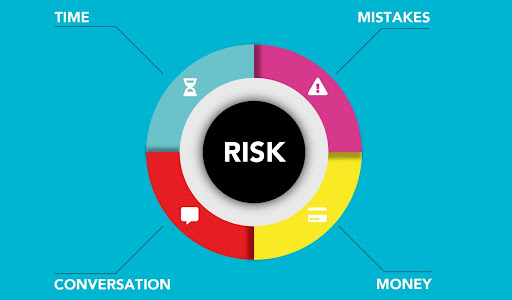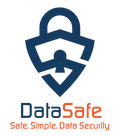Whether it’s taking the train to work, crossing the street, climbing mountains, trying new health supplements, making a major lifestyle change, completing a business deal, or investing in a financial product, risk is an inherent part of every aspect of human life.
Every action you take carries the possibility of failure or something going wrong down the road, especially when running your own business. As a business owner, you can never truly eliminate risk; you can only find ways to mitigate the risk and reduce its impact. This is why risk management strategies are considered to be the foundation of a successful company across industries.
In the corporate world, risk management involves the understanding and analysis of the causes and consequences of risk in order to accomplish the organization’s goals. It is important to remember that risk is evolutionary in nature, which means the levels of risk associated with an action or outcome can change depending on the situation, and so can your perspective of it.
Risk management allows you to account for these uncertainties and make informed business decisions that not only protect your business’s future but also allow your organization to grow. Here are some tips to help you effectively manage risk at work.
How to Effectively Manage Risk at Work?
1. Identify Risks
It is preferable to recognize risks sooner rather than later. The faster you identify a potential problem, the easier it is to manage. Running a risk analysis at the outset of the project to gain a full understanding of potential risks and their outcomes is always the best move. However, you shouldn’t stop there—risk management should be ingrained in every aspect of your work processes and your company culture.
2. Assess and Respond to Risks
Once potential risks have been identified, each of them should be evaluated to determine the possibility of it evolving into a major problem, the degree of severity, and its likely impact. This allows audit teams to rank and prioritize each risk.
Make sure that your assessments are always done in a systematic way and that the results are documented and reviewed at least once a year. The frequency with which risk assessments are done varies according to the size and complexity of each company. Following the risk assessment, the next step in the process is to develop and implement preventive processes and control measures that will allow the business to address risks appropriately and effectively in a timely manner.
3. Monitor Risks
Risk monitoring is an ongoing process of risk management that involves tracking risk management execution and identifying and managing new risks. Risk monitoring allows for immediate action if a risk’s likelihood, severity, or potential impact exceeds acceptable thresholds.
4. Go Beyond Just Compliance
To prioritize your security initiatives, move away from just using compliance obligations or security maturity levels. Compliance should be the starting point, not the destination of your journey. Maturity won’t give you everything you need to know about the problem. For example, a process or site can be at maturity Level 1 (less advanced) yet still be low risk. In a different sector, it could be at Level 3 (more advanced) and have a highly vulnerable process, depending on the requirements.

5. Understand Your Stakeholders’ Risk Needs
Take the time to get to know your stakeholders, so you can better understand their needs and how to communicate with them about risk, such as what to include in your risk report, how often you should update it, and the level of detail you should provide. Try to reach a consensus on how risk is defined, measured, controlled, and mitigated by working closely with the different teams and stakeholders. Collaborating also saves time and allows you to reach a solution faster.
6. Anticipate Future Changes
The rapidly evolving global business environment poses a threat to businesses that are not prepared to handle the changes. Risk profiles are constantly evolving as a result of digital transformation and shifting industry trends.
In today’s world of rapid change and consistent technological advancements, being able to respond quickly to new market opportunities and emerging hazards can give you a major competitive advantage. On the other hand, failure to stay on top of or ahead of the change curve can leave an organization unprepared to deal with disruptive events, which can be fatal. So the risk assessment process must be dynamic to account for unexpected events.
7. Try to Understand Risk Sources
Translating risk assessments into actionable activities in your business plan is one of the most difficult tasks in risk management. Often, risk assessments provided on a traditional two-dimensional graph don’t give you the full picture and can leave you uncertain about how to approach it.
However, if you have an in-depth understanding of the fundamental causes of some of the most severe risks, you will be able to build more effective risk responses that tackle the problem at the source.
8. Resilience Should Be an End Goal
Your risk management strategy should be upgraded regularly as you learn more from subsequent attacks. You need to have a plan that is more focused on security outcomes and increasing resilience to help you enhance operational uptime and perform better under pressure.
A strategy that is built towards gaining resilience is more beneficial in the case of ransomware and other cybersecurity attacks, which are becoming a growing threat across industries. Gaining ransomware resilience will allow you to fortify your incident response approach and take a proactive approach to increase response time when attacks happen.
9. Encourage Cross-Functional Cooperation
As IT platforms become more prevalent in the OT environment, it is critical that IT and OT collaborate and cooperate on risk mitigation strategies. When people work in silos, there is more room for errors which can cost you quite a lot in the long run. Collaboration also saves a lot of effort and capital.
10. Consider Risk Factors when Making Decisions
As essential as the risk assessment process is, it’s possible that considering the impact of critical actions on the organization’s risk profile is just as crucial for decision-making processes. If risk is defined as the distribution of possible outcomes caused by changes in important underlying factors over a particular time horizon, major actions either create new outcomes or affect previously discussed outcomes.
As a result, key decisions should take into consideration the baseline risk assessment and the organization’s risk appetite, after which the board should be consulted as soon as possible.
For more information on risk management and data protection services, get in touch with Data Safe Group, LLC at (973) 814-9968 or visit our website.

